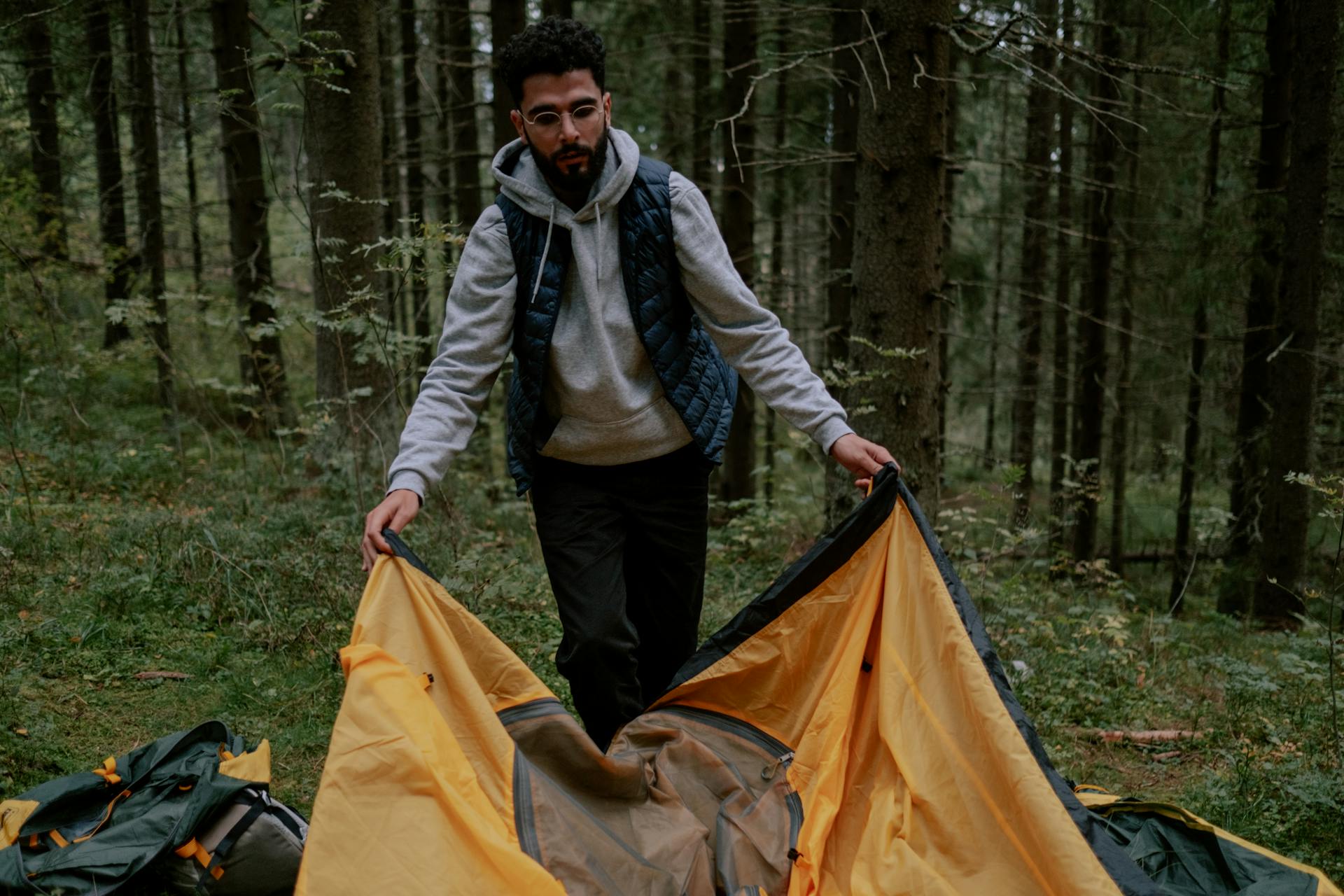If you’ve forgot the tent poles, it can feel like a camping disaster waiting to happen, but it doesn’t have to ruin your trip. With a little creativity and resourcefulness, you can set up a sturdy shelter using items already at hand or found in the great outdoors. Whether you’re a seasoned camper or a first-timer, these quick fixes will ensure you stay dry, comfortable, and safe. Here’s how to tackle this common camping challenge with ease.
Assess the Situation
Before jumping into solutions, take a moment to evaluate your surroundings and resources:
- Check Your Gear: Double-check your camping gear to see if you have anything that can substitute for tent poles, such as hiking poles, paddles, or long sticks.
- Survey the Area: Look for natural resources like sturdy branches, fallen logs, or even large rocks that could serve as supports.
- Consider the Weather: Wind and rain might affect your makeshift setup, so choose a sheltered spot for your tent.
Quick Fixes for a Pole-Free Tent Setup
1. Use Hiking Poles as Tent Supports
If you have hiking poles, they can serve as great substitutes for tent poles. Here’s how:
- Adjust the poles to the correct height for your tent.
- Insert the tips of the poles into the tent’s pole sleeves, or tie them securely to the fabric loops.
- Stabilize the base by burying the bottom end in the ground or securing it with rocks.
Pro Tip: Use extra guylines tied to nearby trees or rocks if you’re facing strong winds.
2. Fashion Branches Into Tent Poles
Nature offers a treasure trove of resources. Search for branches that are straight or gently curved and long enough to serve as tent poles.
Steps:
- Trim leaves and small branches from your selected sticks.
- Secure them inside the tent’s pole sleeves or tie them to the tent fabric.
- Anchor the ends in the ground or weigh them down with rocks to prevent movement.
Pro Tip: For added stability, choose branches that are thick and sturdy enough to withstand wind, and use extra guylines to further secure them to nearby trees or rocks.
3. Construct a Lean-To Shelter Using Rope and Trees
If your tent’s design allows, build a makeshift shelter:
- Find two sturdy trees spaced a few feet apart.
- Tie a rope or cord between them to form a ridgeline.
- Drape the tent fabric over the line and secure the edges with stakes, heavy logs, or rocks.
Pro Tip: This simple design is quick to set up and provides ample protection from the elements.
4. Repurpose Paddles or Oars for Poles
If you’re camping near water and have kayaks or canoes, your paddles or oars can serve as an excellent substitute.
- Position the paddles vertically at the tent’s corners.
- Tie the tent fabric securely to the paddle shafts.
- Use guylines to increase tension and provide added stability.
5. Use Rocks and Sticks to Hold Your Tent Up
For a minimalist approach, rocks and sticks can replace poles entirely:
- Weigh down the corners of your tent with large, heavy rocks.
- Prop up sticks in key places under the tent to lift the fabric and create height.
Pro Tip: This works best in calm weather, where wind won’t compromise the structure.
6. Create a Hybrid Structure with Tree and Branches
If you’re in a wooded area, make use of nearby trees to help support your shelter:
- Tie a rope around a tree trunk for central support.
- Use strong branches as vertical poles by tying them to the ridgeline or the fabric of the tent.
Pro Tip: This allows you to use natural features creatively, minimizing the need for extra gear.
7. Use a Backpack Frame as a Makeshift Pole
A backpack frame (either internal or external) can provide structure in the absence of traditional poles.
- Remove the frame from your backpack.
- Position it vertically inside the tent or use it to create a central ridge support.
- Anchor the base of the frame with rocks or tie it to nearby trees for added stability.
Pro Tip: For optimal support, use a sturdy backpack frame with adjustable straps to fine-tune the tension of your tent fabric, ensuring a snug and secure setup.
8. Repurpose a Fishing Rod as a Tent Pole
Fishing rods are lightweight, flexible, and can work well as temporary poles for your shelter:
- Use the fishing rod to prop up one or more sections of your tent.
- Secure the fabric to the rod using string, cord, or ties.
Pro Tip: Fishing rods work best for smaller tents or shelters, but can offer surprising stability.
9. Build a Tent Frame from Rope and Tarps
If you have rope and a large tarp, you can construct a shelter frame that mimics the shape of a tent:
- Tie a long rope between two trees or supports to create a ridgeline.
- Drape the tarp over the rope to form a shelter and secure the edges with rocks or stakes.
- Use additional ropes to tighten the tarp and keep the shelter stable.
Pro Tip: For added stability, use adjustable knots to secure the tarp tightly to the ridgeline and corners, allowing you to easily modify tension as needed during weather changes.
10. Use a Tarp and a Tent Stake System
In the absence of poles, you can rely on stakes and tarps to form a robust temporary shelter:
- Stake the corners of the tarp directly into the ground to create tension.
- Use sticks to prop up the tarp in the middle to give it height and form.
- Secure additional guylines to surrounding trees or rocks to reinforce the structure.
Pro Tip: This setup works well for a lightweight, temporary shelter that won’t leave you exposed to the elements.
11. Use Bungee Cords for Flexible Support
Bungee cords can act as both tensioners and structural supports. Here’s how:
- Secure one end of a bungee cord to a fixed point, such as a tree or a large rock.
- Stretch the bungee cord across the tent’s ridgeline or attach it to the tent fabric to create tension.
- Repeat this process along different sections of the tent to hold the fabric in place and create a flexible, adjustable frame.
Pro Tip: The elasticity of the bungee cords helps the shelter maintain stability during mild winds, offering a tensioned, stretchable structure.
12. Repurpose a Hammock Frame for Support
If you have a hammock setup nearby, use its frame to support your tent:
- If your hammock has two sturdy, adjustable posts, tie the tent fabric to the hammock’s frame.
- Drape the tent over the frame or use the posts to create vertical height for your shelter.
- Adjust the tension of the hammock ropes to ensure the tent stays stable.
Pro Tip: This works well when camping near a hammock or if you have a camping hammock setup that’s strong enough to hold the tent’s weight.
13. Use an Inflatable Mattress or Air Bed as a Support System
Inflatable mattresses, particularly thick camping air beds, can double as support structures:
- Position the air mattress in the center of your tent to create a stable base.
- Use the edges of the mattress to hold up the tent fabric and form a partial or full frame.
- Anchor the mattress to the ground using stakes or rocks to prevent shifting.
Pro Tip: This system works particularly well for tent structures that only need minimal support and are best used in calm weather conditions.
14. Create a Tunnel Using Rope and Clothesline
For a more inventive, tunnel-like setup, use rope and a clothesline to form a simple shelter:
- Stretch rope in a U-shape across a pair of supports, like trees or large rocks.
- Drape your tent fabric over the rope, creating a tunnel effect.
- Secure the ends of the fabric with rocks or stakes to maintain shape.
Pro Tip: This creates an interesting, enclosed space and works great for a minimalist or improvisational shelter. It can be adjusted in size depending on how much rope you have.
15. Harness a Group of Hiking Poles to Form a Rig
Instead of using just one hiking pole, group several of them together to create a larger framework:
- Align multiple hiking poles side by side to create a more extensive ridge support.
- Tie them together securely using strong rope or cord to form a unified structure.
- Attach the tent fabric to the poles and secure the ends with rocks, stakes, or guylines.
Pro Tip: This method provides a more solid structure when you don’t have a single long pole available but have several smaller ones, such as hiking poles or trekking poles, that can be tied together.
These 10 ideas offer a range of creative solutions to ensure that forgetting your tent poles doesn’t ruin your camping experience. Whether you’re utilizing natural elements, repurposing gear, or getting creative with what you have, you’ll find that a little ingenuity can go a long way in keeping your shelter intact.
Preventing Tent Pole Mishaps in the Future
While these quick fixes are lifesavers, it’s best to avoid the situation altogether. Here’s how:
- Create a Packing Checklist: Include tent poles on your list and double-check before heading out.
- Invest in Spare Poles: Keep an extra set of universal tent poles in your gear.
- Practice Setups: Familiarize yourself with your tent’s setup process to identify critical parts.
- Use a Pole Bag: Store tent poles in a dedicated, brightly colored bag to avoid leaving them behind.
Final Thoughts
Forgetting your tent poles doesn’t have to spell disaster. With a little ingenuity and the resources at hand, you can create a reliable shelter and continue enjoying your camping trip. Remember, camping is about adaptability and embracing challenges—and overcoming obstacles like this makes for a great story to share around the campfire.
Happy camping!

